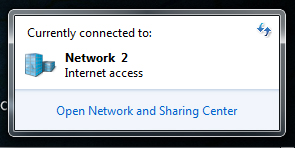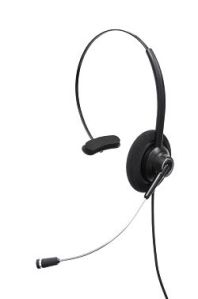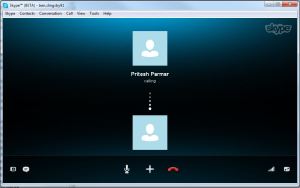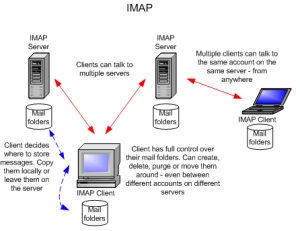Protocols and how you communicate using digital technology.
Digital technology is a widely growing industry across the world and the compatibility between digital devices is important for the two or more devices to communicate. The compatibility is down to protocols between the two devices, so what are protocols? Protocols are the established code of procedure or behaviour between two or more devices, The Internet is often used as an example of a protocol-based system that works and is utilized and respected across a wide variety of hardware and software.
HTTP
HTTP: on all user interface browsers on nearly all computers around the world you find Http, underneath are the networks and the protocols and servers or “engines” communicating and processing requests that return the various different media. HTTP or (HyperText Transfer Protocol) is a protocol of the internet. It directly determines what you can and cannot send. What is going on while I’m using the internet? When clicking on a hypertext link, you are transferring an URL to your browser. From this URL, your browser knows which server to contact and what file to ask for. This is where the http protocol starts: it connects to the server and transfers the files. During an http transaction, this is the representation of a Normal http model:
1 Client connects to host,
2 Server accepts connection,
3 Client request a file,
4 Server sends a response (including file or not).
This protocol is not just used by browsers on computers, it’s used on all electronic devices that surf the internet.
Here is a demonstration of use on the internet
First make sure the device or computer being used is connected to a network with internet access
![]() Open up a browser for this we are using Google chrome
Open up a browser for this we are using Google chrome
With this browser the home page is the Google search engine, search engines, search the Internet or select pieces of the Internet based on important words. They keep an index of the words they find, and where they find them. They allow users to look for words or combinations of words found in that index. However we won’t be using the search engine today.
Using the address box at the top of the browser, I typed a web address found on a business card given to me, and pressed enter and the browser took me to the Website
VoIP
VoIP, or (Voice over Internet Protocol) is a method for taking audio signals and turning them into digital data that can be transmitted over the Internet. This allows users to make free phone calls using VoIP software. In this article, we’ll look at the principles behind VoIP, its applications and the uses it has.
VoIP has three ways to place a call in common use today:
1. ATA or (analog telephone adaptor). ATA allows you to connect a standard phone to your Internet connection that allows you to use your phone over a VoIP service. It uses the analog signal from your phone and converts it into digital data and transmits it over the Internet.
2.IP Phones, IP phones have an Ethernet connector instead of the standard phone connectors and have all the software necessary inside the phone, to allow you to make IP calls when connected to your internet.
3. Computer-to-computer, many different companies offer free software that allows you to use their VoIP services. Using the software, a microphone, speakers, sound card and an Internet connection, you can make short or long distance calls usually for no charge. An example of this type of VoIP service is Skype, one of the more popular ways to communicate with others through a computer.
Here is a demonstration of a VoIP service provided free by the Skype software.
First I connect my headset which is a microphone and speaker To the computer, making sure all the right drivers are installed And the headset works outside the Skype program. When the Skype program is first started it will ask you to set Up Your headset levels, making sure you are heard and can Hear the person talking, it then asks you to make a Test call to make sure your headset works.
With the program open we see the contacts tab, in this demo I am going to talk to Pritesh, a person I work with. He is visiting a client in London and using his laptop and internet connection he is going to connect his Skype program to my Skype program via VoIP protocols the software used, for us both to have a conversation.
First I make the call just as you would using your mobile phone, I clicked on the contact and pressed call, and just like a normal phone you hear a dial tune to indicate that you are calling someone. You also have the option to hang up your call if you wish to.
When connected to Pritesh’s Skype account, we communicate in the same fashion to a traditional phone call and if you both have web-cam available you can talk with a face to face experience allowing you to communicate your ideas across better.
POP
POP or (Post Office Protocol), is an old protocol used to retrieve e-mails. Most e-mail applications still use the POP protocol, although most use the newer IMAP (Internet Message Access Protocol). So how does it work…? The Post Office Protocol defines how your email client should communicate with Your ISP (Internet Service Provider) and is what allows you to retrieve mail from your ISP. A POP protocol is very simple and easy to implement.
IMAP
IMAP (Internet Message Access Protocol) defines the email server and a way to retrieve mail from it. IMAP is a more recent and advanced standard protocol for mail storage than the POP protocol. IMAP with its additional features for example, allows you to search through your e-mail messages for keywords on your mail server, you can then choose which messages you wish to download to your computer, It also allows for messages to be kept in multiple folders, folder sharing and online mail handling which means your email messages don’t have to be stored on your computer and take up the computer’s disk space.
The legal and ethical considerations relevant to the interactive media industry.
In this article we talk about legal and ethical considerations relevant to working in the interactive media industry. We will cover: intellectual property rights, permissions, libel and issues of sensitivity to other social groups, relevant acts of parliament, relevant employment law, and relationship with clients, representation and effects debates.
When working in interactive media a designer is often met with legal constraints limiting what is possible with a product or material that wasn’t made by them. As someone working in the media industry it is important they check for intellectual property or (IP) rights, so what is intellectual property? IP lets people own the work they created and put in place by parliament. There is four types of IP that when put together can give complete protection.
1. Patents, patents protect the working parts of your product and the processes used to make its various components and stop other people taking that idea or process and using it on their own products because when or if they do they face penalties.
2. Trade marks, a registered trade mark protect the product and symbol.
3. Designs, A registered design protect the shape and visual appeal of a product and its various components.
4. Copyright, the Copyright act protects the product’s owner manual and even images of the product and the song used in its television advertisement.
This insures the product is not copied by people needing permission and unauthorized to do so without facing penalties. To obtain permission to use a work protected by intellectual property, the designer finds the copyright owner of the material he or she intend to use, contact the owner, and request the right to use the work in the territory and format intended, and in some cases pay the owner a fee.
When a contract is written up between the Copyright owner and the person with desired interest in the copyrighted content, who is responsible for the new or reused content is often passed on to the new owner. This protects the original Copyright owner from being libel for any untruths or contempt to others published, written or broadcast by the new owner.
This is similar to the relationship with clients and the ethical and sensitive issues it brings, for example you have been given a brief to design a poster promoting a new taxi hire company but they ask for content that taints all the other local taxi companies and competition, which is libel and is not in good morals? The ethics your company or yourself presents is important, maybe the contract states the client takes all responsibility, but this still taints your business and loses you custom with all those other taxi companies. So should you say no? And state the ethics of your company or try convince the client to employee some moral respect to the competition? Either way it is important you represent your company in its best light within the community and the media industry, including the “Effects” it have on the public through media regulation, classification and censorship, as it has been said that the media has a power to influence the masses and “effect” them if wanted in a negative way, and there is a need to protect people easily influenced from material that may cause them harm in one way or another.
Good ethics should also be diploid with in the work place and work force for example Discrimination at work, the law protects you and your employees from discrimination at work including dismissal, employment terms and conditions, pay and benefits, promotion and transfer opportunities, training, recruitment and redundancy. People with a disability are also entitled to the same rights, plus a fair chance in an application (eg providing forms in Braille, audio formats) also aptitude tests (eg giving extra time to complete the tests) and interview arrangements (eg wheelchair access, communicator support) and making sure the workplace has the right facilities and equipment for disabled workers or someone offered a job. However there are some cases of discrimination allowed if they are for an organisation that has certain rules for example employing only women in a health centre for Muslim women or a Catholic school restricting applications for teachers to be Catholics only.
As an employer with in the industry it is also important to keep up to date with employment law with in all aspects of their company for example an interactive application form made by a company may ask for information that has now been made against the law for a company to ask for without government standard security systems in place to protect the information from reaching a third party. It is also important for an employee of a company to think about employment law within the their industry,
For example, what you can and cannot talk about with who and where, e.g. often business owners will have a disclaimer and terms and conditions within your employment contract stating your limits on distributing information about the company or clients of the company, this is also often attached as a footer to the company emails, denying you permission from giving information to third parties, and as a person working in the media industry it is important you know that employment contracts often state that any material you make or used in the work place or on company equipment will belong to the company.
We spoke about how people working in this industry have a lot to consider with legal and ethical values relevant to working in interactive media and working with others in the industry. It is easy to see how important it is for people who work in the media industry to take caution and responsibility for actions taken. How the repercussions affect others around them with in the workplace, the industry, public and community can be anything from small to a global affair.
Principles of design in interactive media
In this article we will look and outline the basic principles of graphic design, interactive design, and navigational design and how it applies to technology and why it is important that a designer understands these principles. We will consider how applications and websites are designed around the intended audience and the various devices that interactive media is applied.
Graphic Design and its processes are a fundamental step to working in interactive design and the elements given to an interactive product for it to be successful in the target market. Graphic design is a process of combining text to graphics in an effective style for communicating a message to an intended audience in a number of ways, for example the design of posters, newsletters, brochures, graphics, signs, logos and much more. Graphic Designers use element such as Lines, shapes, mass, textures and colour as building blocks of design either with pencil and paper or desktop publishing. A Designer may have their own ideas on the principles of design but the most common are contrast, white space, proximity, balance, alignment and repetition or consistency.
These Graphic principles and processes merge tightly with interactive design. Using visual design defines the look and style of an interface, expressing branding and a consistent visual language, framework and functional design from which information is communicated easily throughout the application. Extending this is Design Style, Design style is the guidelines the Designer sets them self as a description of all aspects of the design. However much of above wouldn’t work effectively for the user without Navigation Design. Navigational Design is the processes of helping the User find the desired Information quickly though providing multiple navigational paths to all pages or screens making sure the users know where they are at all times through providing consistent context.
But Interactive media designers also follow some other rules important to the development of the product and the interaction of the intended audience for example
- Setting the objectives,
- Understanding the audience,
- Understanding the alternatives,
- Design to produce the total user experience,
- Evaluate the designs and navigation
- continual user observation
This is often used in a methodology that helps the designers identify key areas of development of the product: Design, Strategy and Technology equalling Innovation and the maximized total user experience making the product a greater success.
When using technology in interactive media it is important to research into the capability and protocols between two devices. The application will need to fit into certain requirements, for it to be compatible with the chosen software and hardware. For example an iPhone Application needs to be written/developed in Objective C (a programming language) for it to work with Apples operating system IOs requirements. This is similar in most processes of developing applications, websites or software there are rules the developer needs to follow. Like an old clock all the cogs have to fit together for the hands to turn, the code has to be compatible for the interface to work. One way to do this is to use an Authoring tool.
Authoring tool is a program that helps designers to create or write interactive applications. Like the Microsoft- Visual Studio allows you to develop and create Objective C application through a WYSIWYG interface (both graphics and code are displayed). Authoring tools usually enable you to create a final application by just linking together objects, such as text, images, video or sound.
So it is clear to see there are many elements a Designer comes across in interactive media and how basic principles of graphic design, interactive design, and navigational design applies to technology and how important a designer understands these principles used, and how they are designed around the intended audience and the various devices that interactive media is applied.
my first Post!
So Here I am. Making My first post on my blog.








